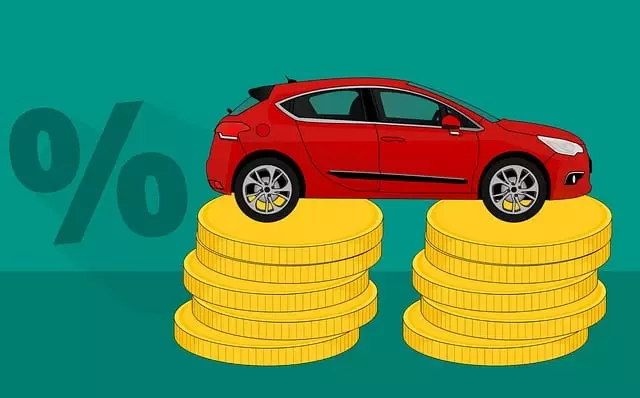Understanding auto insurance premium factors is key to lowering costs. Factors include age, gender, driving history, vehicle type, safety features, and claims history. By practicing defensive driving, maintaining a clean record, selecting safer vehicles, bundling policies, choosing appropriate coverage levels, leveraging discounts (safe driving, bundled policies, payment methods, professional/student status), adopting safe driving practices, and building strong credit, you can significantly reduce your auto insurance premium while ensuring adequate protection. Always compare quotes from multiple insurers to find the best value.
Looking to lower your auto insurance premium? This comprehensive guide provides professional advice on navigating the complex factors influencing your rates. From understanding your driving history and vehicle specifics to choosing the right coverage and shopping around, we break down effective strategies. Learn how bundling policies, practicing safe driving, and maintaining a strong credit score can significantly reduce costs. Discover tips to unlock discounts, compare quotes effectively, and secure affordable protection for your vehicles.
Understanding Your Auto Insurance Premium: Factors at Play

Understanding your auto insurance premium involves recognizing that several factors influence its final amount. When it comes to how to lower your auto insurance premium, knowing these elements is key. Insurance companies consider a range of personal and vehicle-related attributes, including but not limited to age, gender, driving history, location, type and model of vehicle, safety features installed, and claims history.
For instance, younger drivers often face higher premiums due to their lack of experience, while safe driving records and advanced driver assistance systems can significantly reduce costs. Additionally, where you live affects rates; areas with higher crime rates or heavy traffic may lead to pricier insurance. Understanding these factors empowers you to make informed decisions, such as practicing defensive driving, maintaining a clean record, choosing safer vehicles, and verifying that your coverage is adequate but not excessive for your needs.
Evaluating Your Driving History and Record

Evaluating your driving history is a crucial step in understanding how to lower your auto insurance premium. Your driving record, including any accidents, moving violations, and previous claims, significantly influences your insurance rates. A clean driving history generally translates to lower premiums as insurers perceive you as less risky. Regularly reviewing your driving record and correcting any errors can help maintain or improve your insurance score.
Consider keeping a safe driving record by adhering to traffic rules, maintaining a defensive driving style, and avoiding unnecessary risks. These practices not only enhance your safety but also demonstrate responsible behavior to insurance companies, potentially leading to significant savings on your auto insurance premium.
The Impact of Your Vehicle's Make and Model

Your vehicle’s make and model play a significant role in determining your car insurance premium. Insurers consider certain makes and models to be more high-risk or expensive to repair and maintain, leading to higher rates. For instance, luxury cars or those with advanced technology may command higher premiums due to their potential for higher repair costs and theft vulnerability. Conversely, older or more basic models might enjoy lower premiums as they are generally less valuable and have lower replacement costs.
To lower your auto insurance premium, consider choosing a vehicle known for its safety features and reliability, which can lead to reduced rates. Additionally, maintaining a clean driving record and avoiding accidents or tickets will significantly impact your premium over time. These factors demonstrate responsible driving habits, making you less of a risk to insurers.
Insuring Multiple Vehicles: Bundling for Savings

Insuring multiple vehicles can significantly impact your auto insurance premium, but there’s a way to lower costs while keeping coverage in place. Bundling, or insuring both cars under one policy, often comes with substantial savings for policyholders. This is because insurers offer discounted rates when you bundle home and auto insurance policies since it reduces their administrative expenses.
When considering how to lower your auto insurance premium, bundling can be a smart strategy. It streamlines the claims process and allows for better coverage management as all vehicles are under one comprehensive policy. As an added benefit, many insurers also offer loyalty discounts when you’ve been with them for a certain period, further enhancing potential savings on multiple insured vehicles.
Choosing the Right Coverage Levels: Balancing Protection and Cost

When it comes to car insurance, understanding how different coverage levels impact your premium is key to lowering costs without sacrificing protection. It’s essential to assess your needs and budget carefully before making a decision. Opting for comprehensive or collision coverage might seem like a good idea, but these add-ons can significantly drive up your monthly payments. Instead, focus on finding the right balance between protecting yourself from financial risks and keeping expenses manageable.
Consider your vehicle’s age, condition, and resale value. If it’s relatively new, you may not need extensive coverage as its replacement cost is lower. On the other hand, if you own an older model or a classic car, ensuring sufficient coverage for repair or replacement might be more important. Evaluating these factors will help you choose liability limits that offer adequate protection without exceeding your budget, ultimately leading to a lower auto insurance premium.
Discounts and Promotions: Unlocking Savings Opportunities

Many insurance companies offer discounts and promotions that can significantly lower your auto insurance premium. To take advantage of these savings opportunities, start by comparing different insurers and their respective offers. Some common discounts include safe driving records, bundling multiple policies (like home and auto), paying in full upfront, and maintaining a good credit score.
Additionally, certain professions, student discounts, and membership in specific organizations may qualify you for exclusive rates. Review the terms and conditions of each discount to understand the eligibility requirements. By strategically applying these savings tactics, you can substantially reduce your auto insurance costs without compromising on coverage.
Safe Driving Practices: Reducing Risk, Lowering Premiums

Safe Driving Practices play a pivotal role in not just ensuring your safety but also significantly impacting your car insurance premiums. By adopting responsible driving habits, you can reduce the risk of accidents and claims, which directly translates to lower insurance costs. For instance, maintaining a safe following distance, adhering to speed limits, and avoiding sudden maneuvers are simple yet effective ways to minimize potential hazards on the road. These practices not only contribute to a safer driving environment but also demonstrate maturity and caution, making you a less risky driver in the eyes of insurance companies.
Additionally, proactive safety measures like regular vehicle maintenance can work wonders for your insurance premium. Keeping your car well-maintained ensures it operates optimally, reduces mechanical failures, and decreases the likelihood of breakdowns or accidents. Many insurance providers offer discounts for policyholders who take such precautions, recognizing that these steps lower the overall risk associated with insuring their vehicles. Therefore, how you drive and care for your car are key factors in determining your auto insurance premium.
Building a Strong Credit Score: Its Influence on Insurance Rates

Building a strong credit score is an often-overlooked yet powerful way to lower your auto insurance premium. Credit history plays a significant role in insurance companies’ risk assessment, and a good credit score can help reduce your rates. Here’s how: Insurance providers consider individuals with excellent credit scores more reliable and less likely to file claims, leading to less financial risk for them. As a result, these customers often receive lower premiums.
So, how can you improve your credit score? Start by checking your credit report regularly for errors or discrepancies. Pay all your bills on time, including credit cards and loans. Maintain a low debt-to-credit ratio, which means not using up too much of the available credit you have. Additionally, keeping older accounts open can positively impact your score. These practices contribute to a healthier financial profile and may result in more competitive auto insurance rates.
Shopping Around: Comparing Quotes for the Best Deal

Shopping around is a powerful tool in your arsenal when it comes to lowering your auto insurance premium. Don’t settle for the first quote you receive; instead, take the time to compare multiple offers from various insurers. This process allows you to identify significant variations in pricing and find the best deal available.
Start by gathering quotes from reputable companies, utilizing online platforms or direct communication. Carefully examine each quote, considering not only the price but also the coverage details and exclusions. Remember, a lower premium isn’t always better; ensure you understand what’s included and excluded to avoid unexpected costs down the line.



